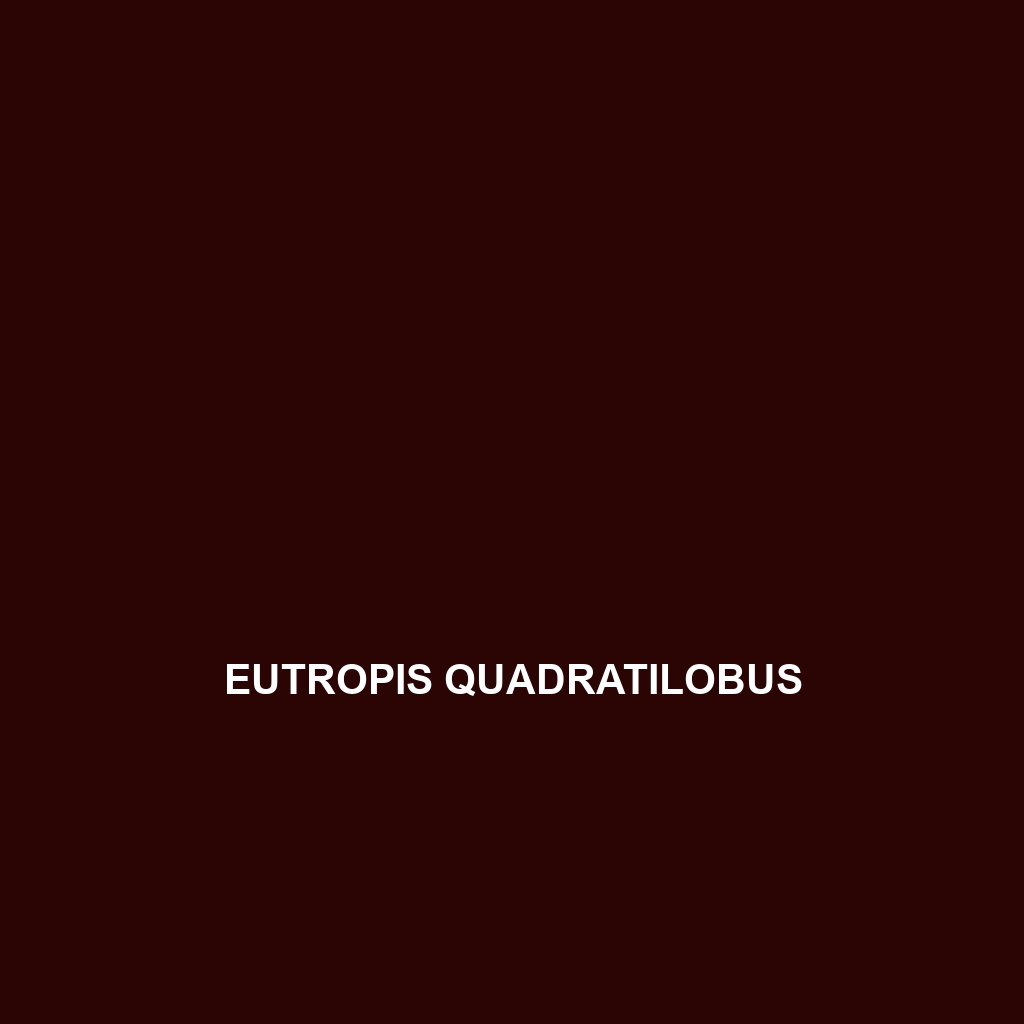Common Name
Eutropis quadratilobus
Scientific Name
Eutropis quadratilobus
Habitat
Eutropis quadratilobus, commonly known as the Four-Lined Skink, primarily inhabits a range of ecosystems across Southeast Asia, particularly in countries like Indonesia, Malaysia, and Thailand. This species thrives in diverse environments including tropical rainforests, open savannas, and occasionally in disturbed urban areas. The warm and humid climate of these regions, along with adequate foliage and ground cover, provides the ideal conditions for this skink, allowing it to camouflage effectively and evade predators. In addition to forests, Eutropis quadratilobus can sometimes be found near marine habitats, particularly in coastal areas where sandy substrates are present, contributing to its adaptability and resilience in various environmental conditions.
Physical Characteristics
The Eutropis quadratilobus can be easily recognized by its distinctive physical features. Typically, adults measure between 12 to 20 centimeters in length, making them a medium-sized member of the skink family. Their body is elongated and cylindrical with a smooth, shiny surface. The color palette of Eutropis quadratilobus ranges from light brown to olive green, often adorned with four darker longitudinal stripes running down its back, which gives it its name. This unique striping not only aids in identification but also serves as an effective camouflage in their natural setting. Furthermore, their small limbs and tapering tails enhance their agilitiy, allowing them to navigate effortlessly through their environment.
Behavior
Diet
The Eutropis quadratilobus is primarily insectivorous, preying on a variety of small insects. Their diet includes ants, termites, beetles, and other invertebrates found in their habitat. These agile skinks are opportunistic feeders, employing a foraging strategy that involves both ambush and active searching tactics. Occasionally, they may consume plant material, making them semi-omnivorous. The ability to adapt their diet according to availability underscores their resilience and plays a critical role in their survival in varying ecosystems.
Reproduction
The reproductive cycle of Eutropis quadratilobus is characterized by interesting seasonal behaviors and parental roles. Mating typically occurs in the warmest months of the year, with females laying clutches of 3 to 6 eggs in hidden locations to protect them from predators. The eggs incubate for approximately 2 months before hatching. Post-hatching, the young skinks receive minimal parental care and must fend for themselves right away. Their rapid growth rate aids in their survival, as they morph quickly into adults capable of defending their territory and reproducing in their first year.
Conservation Status
Currently, Eutropis quadratilobus is listed as Least Concern by the International Union for Conservation of Nature (IUCN). Though not currently facing significant threats, their habitats are impacted by deforestation, urbanization, and habitat degradation. Conservation efforts are focused on habitat preservation and mitigating the impact of human activities in key areas where this species is prevalent. Ongoing research is crucial for understanding their population dynamics and ensuring long-term stability within their ecosystems.
Interesting Facts
One of the most fascinating aspects of Eutropis quadratilobus is their remarkable adaptability to different environments. They possess the ability to change their coloration slightly according to their surroundings, enhancing their camouflage. Furthermore, these skinks are capable of shedding their tails when threatened, a defense mechanism that allows them to escape while their predator is distracted. The tail can regenerate over time, highlighting their remarkable resilience.
Role in Ecosystem
Eutropis quadratilobus plays a vital role in maintaining the health of its ecosystem. As an insectivorous species, it helps control the population of various insects, thereby contributing to pest regulation. Additionally, they serve as prey for a variety of predators, thereby supporting the food web within their habitat. Their role can be considered critical, as they provide a balance within the ecosystem, indicating overall environmental health and biodiversity.
